Etosha National Park, situated in the Kunene region of Namibia, derives its name from the Etosha Pan, which makes up a significant portion of the park's area. Covering 4,760 sq km, the pan is a large salt flat that only fills with water during heavy rains. The park spans 22,270 sq km and features diverse landscapes, including saline desert, savanna woodlands and grasslands. Mopane trees are the dominant tree species in the park, making up around 80% of the forests. The park’s arid and sparse vegetation allows for easy spotting of wildlife attracted to the salt pans and deposits in the desert. Etosha National Park is known for its large population of game species, offering visitors a unique wilderness experience. Home to a wide variety of mammals, reptiles and birds, the park is a popular safari destination.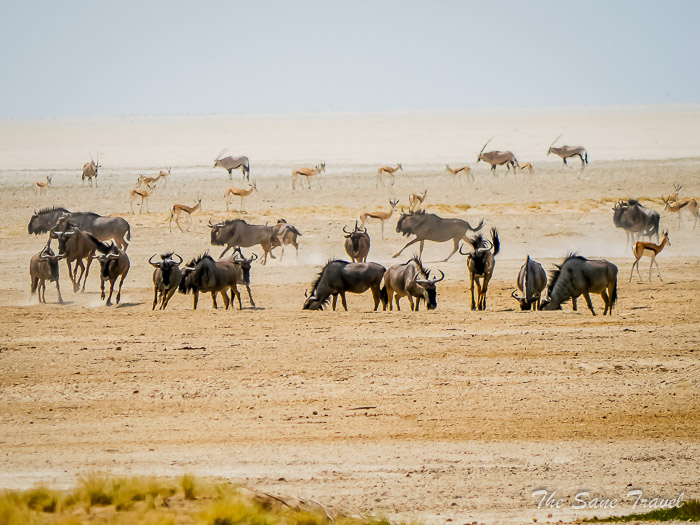
When to visit
Etosha experiences two clearly defined seasons: the wet season, running from November to May, and the dry season, spanning from June to October. Game viewing is generally best during the dry season, when animals gather around the park's watering holes – their primary water source in the hot weather – resulting in a high concentration of wildlife.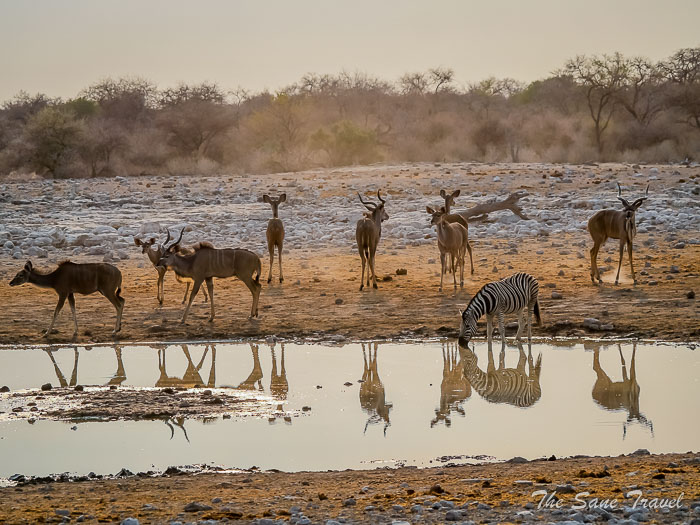
What animals you will see
The diverse range of wildlife in Etosha National Park includes numerous large mammals such as lion, leopard, elephant, rhino, giraffe, wildebeest, cheetah, hyena, mountain and plains zebra, springbok, kudu, gemsbok, impala and eland.

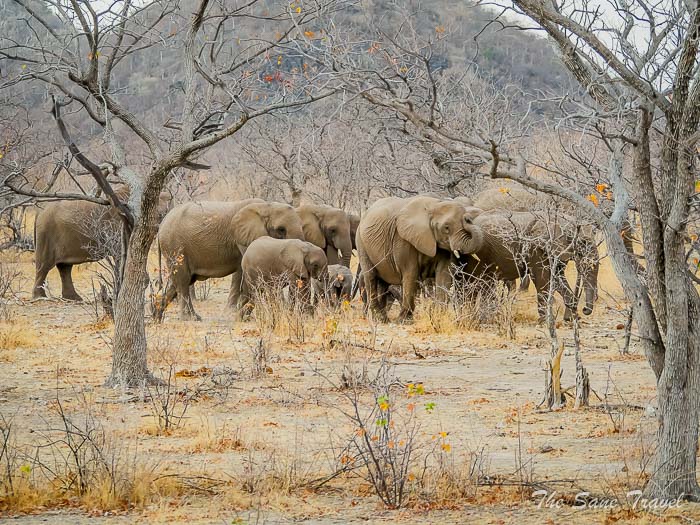
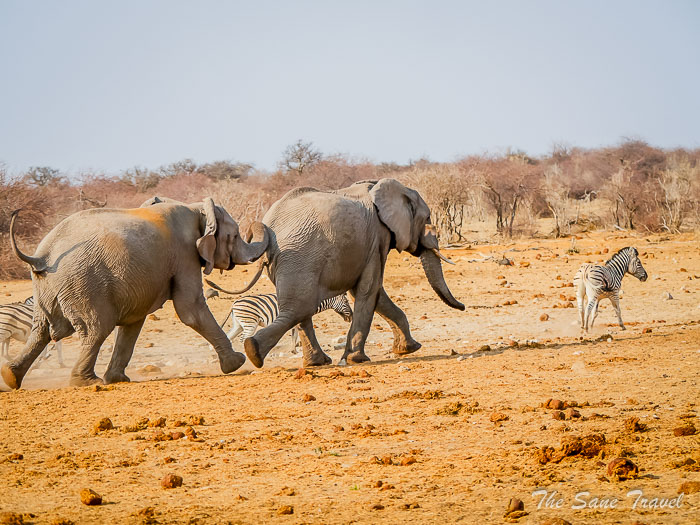
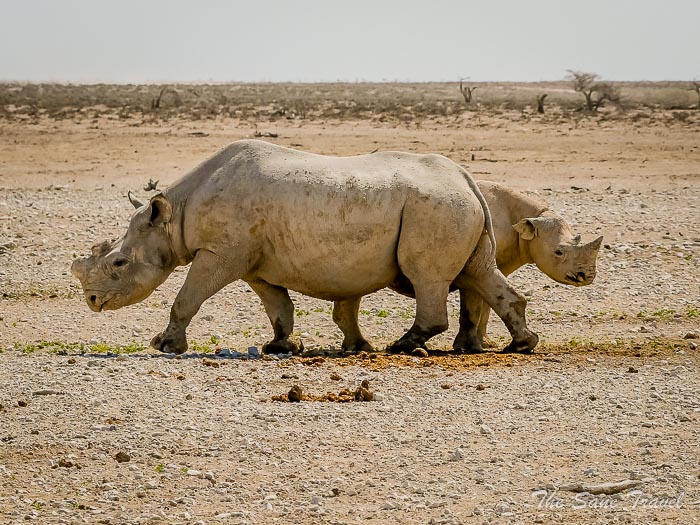
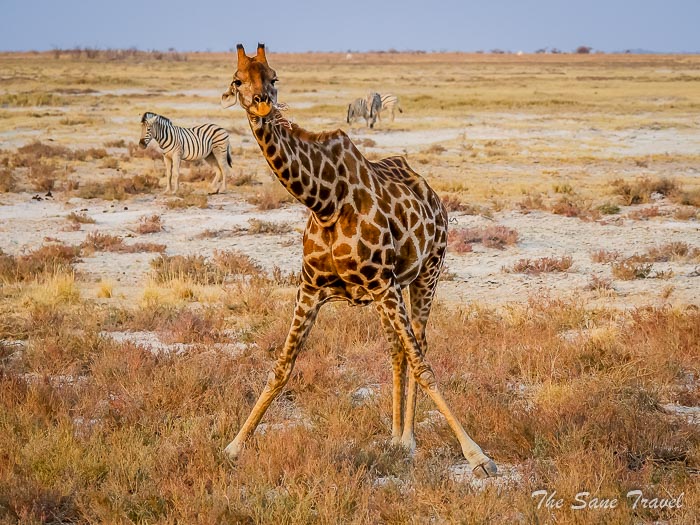
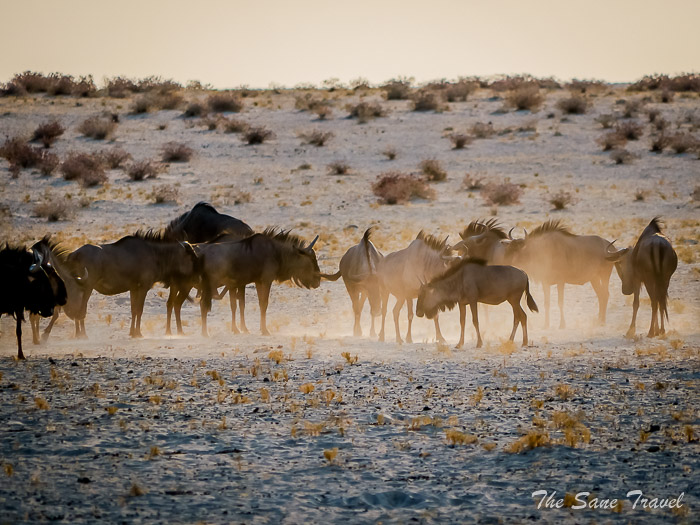

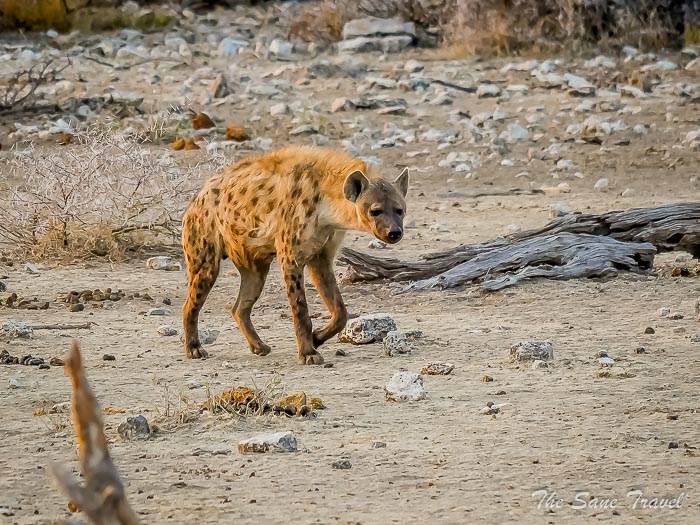
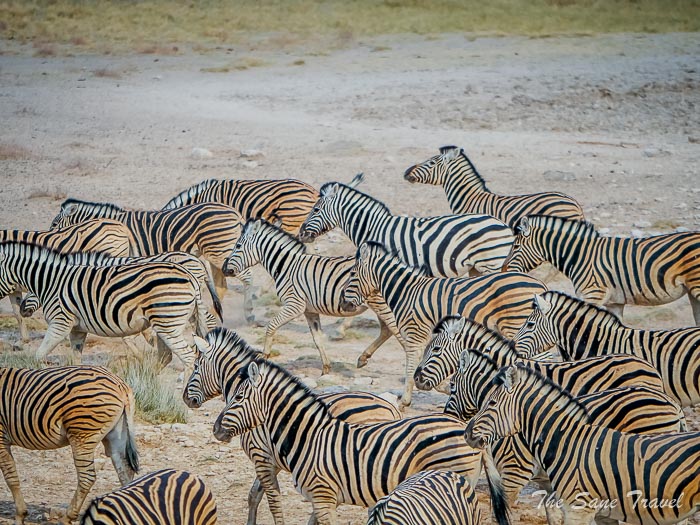
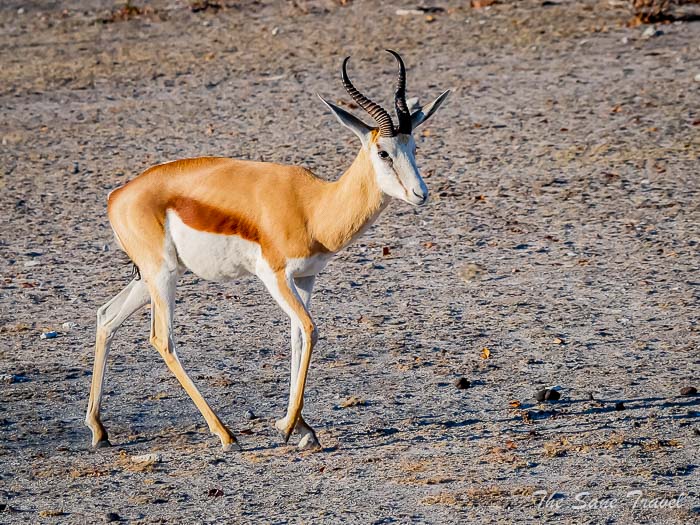
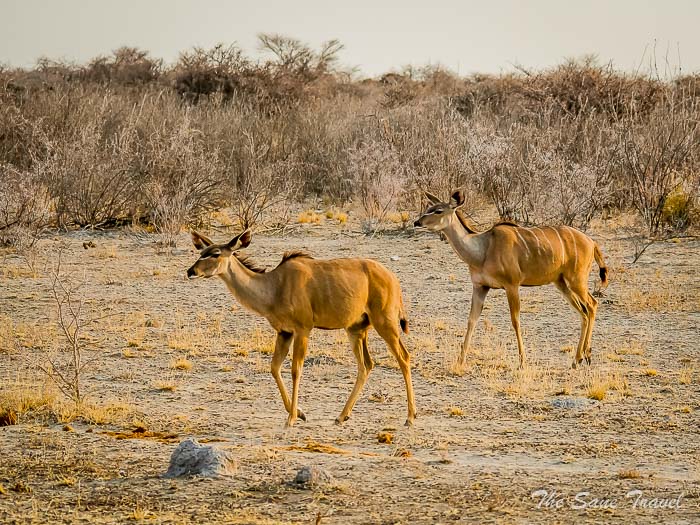

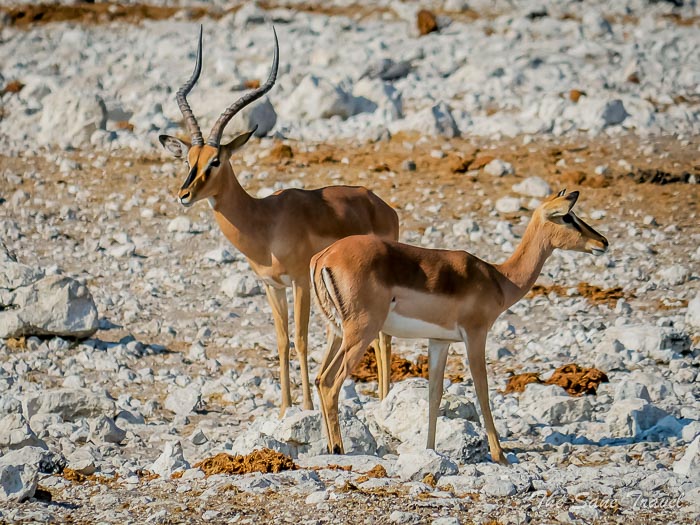
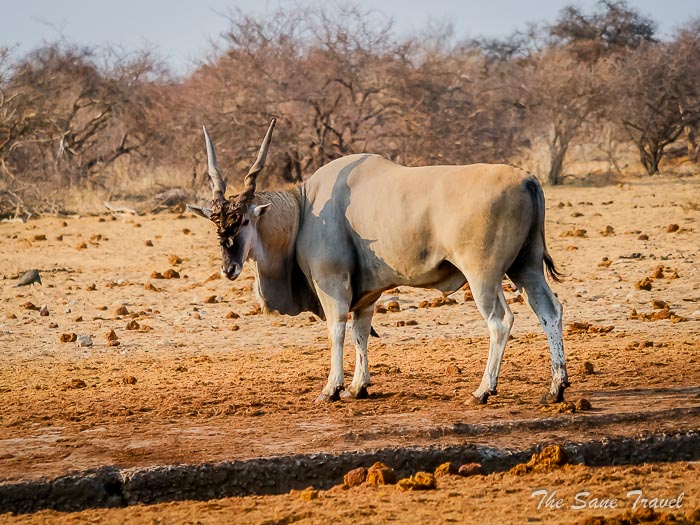
Additionally, smaller species such as jackal, warthog, dik-dik, steenbok, ground squirrel, honey badger and bat-eared fox can be found in the park.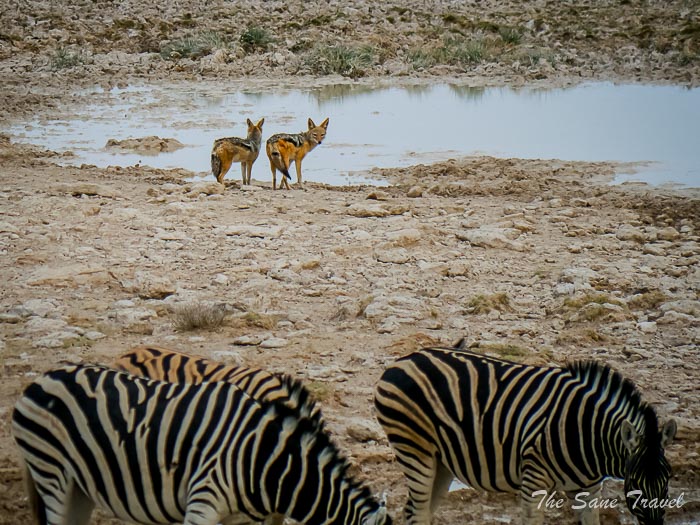
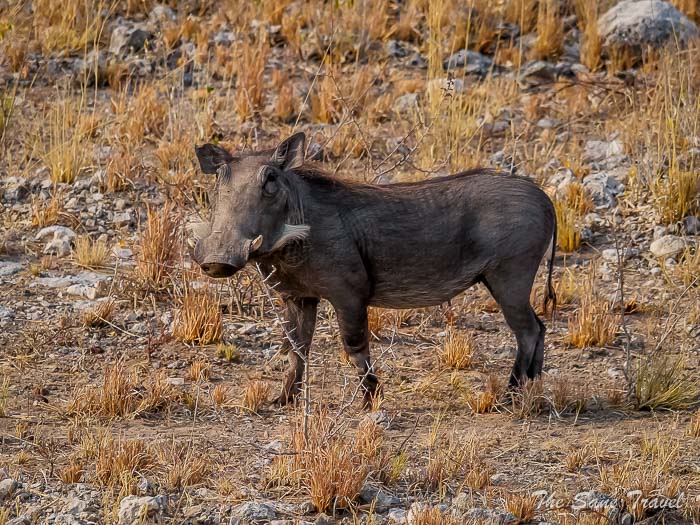
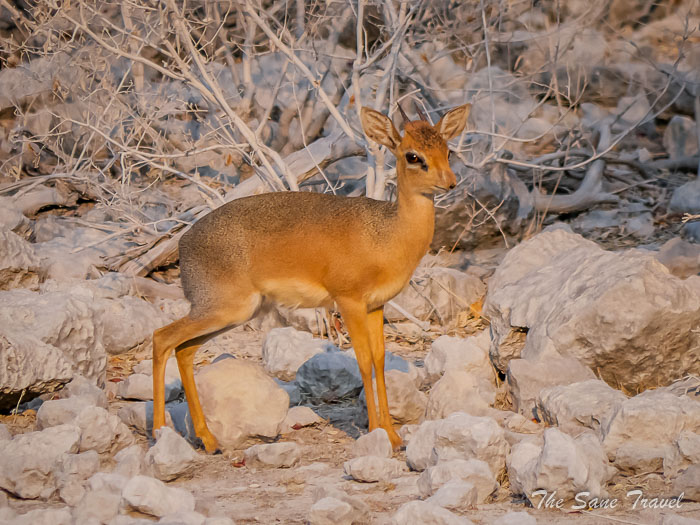
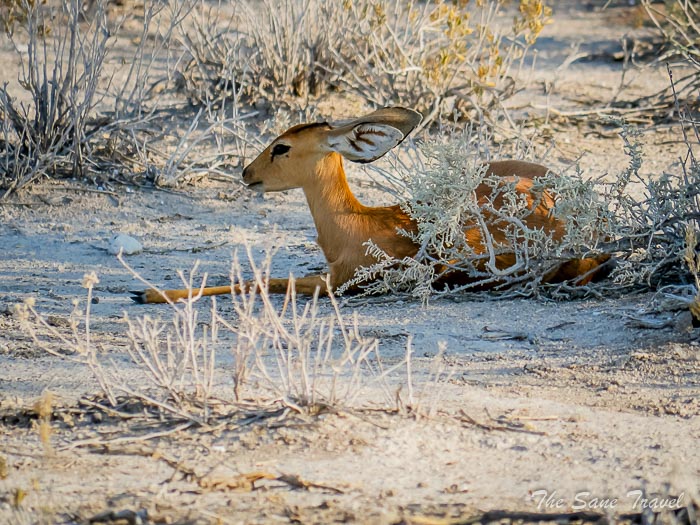
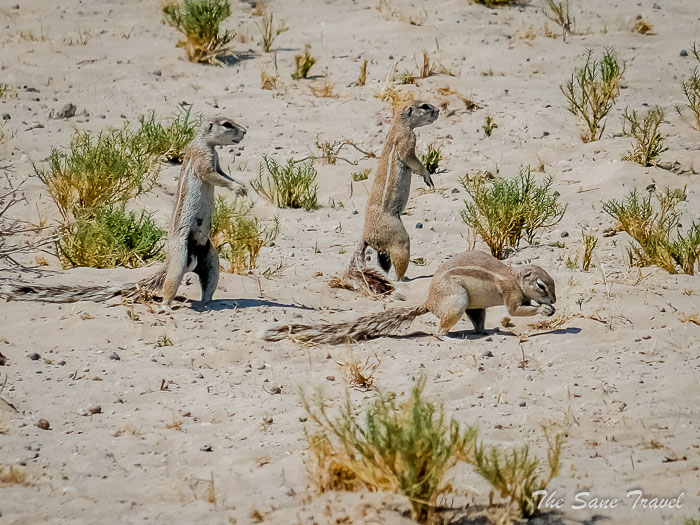
In total, the park is home to 114 species of mammals. If you are fortunate, you may catch sight of four of the Big Five – lion, elephant, rhino and leopard. Leopards are known for their elusive nature, while buffalo are not present in the park. Among the diverse birdlife in Etosha, I spotted ostriches, goshawks, kestrels, vultures, kori bustards and other species.

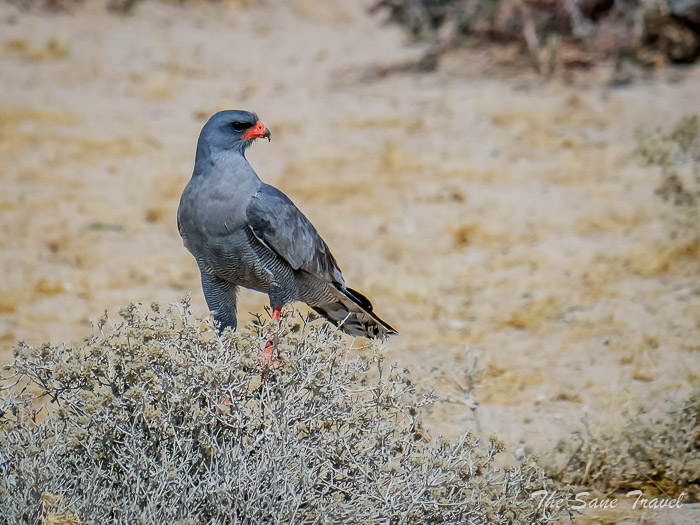
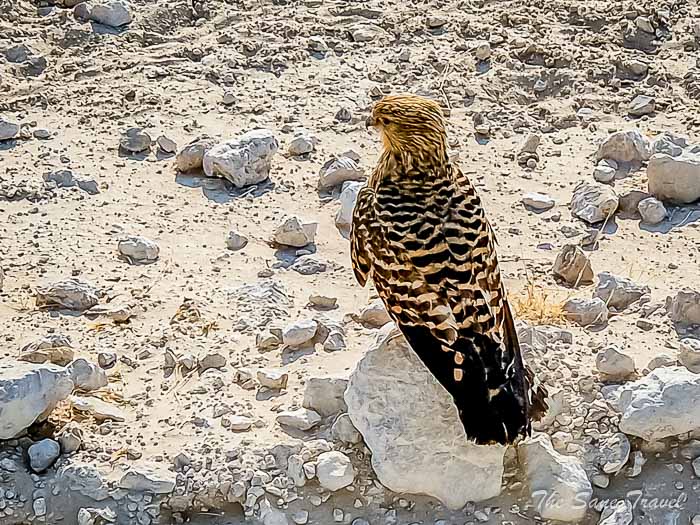
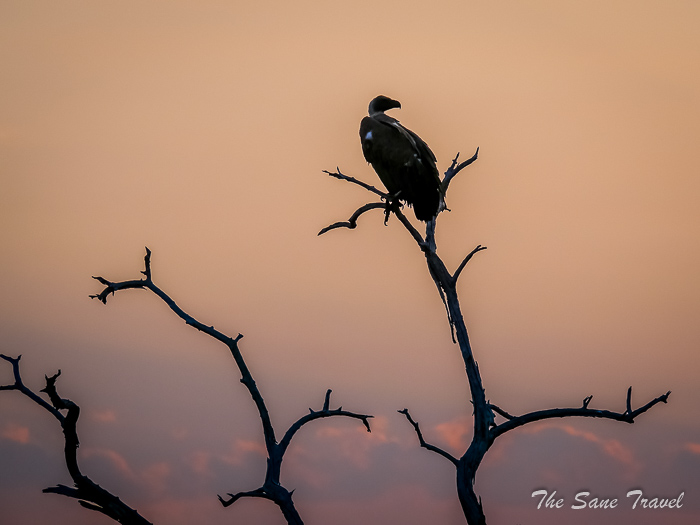
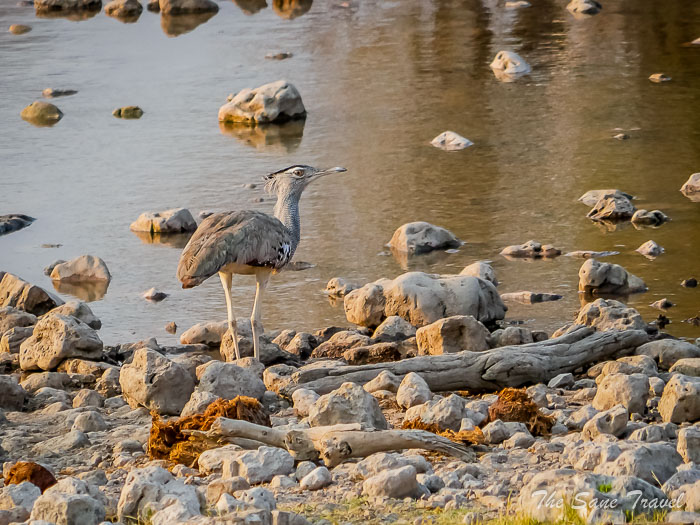
Where to stay
Travellers seeking accommodation in Etosha National Park must decide whether to stay inside or outside the park. Staying within the park offers greater flexibility since visitors are not required to leave at closing time, while those staying outside can only enter at sunrise and must exit by sunset. Moreover, staying inside provides earlier access to the park, allowing you to avoid the wait at the gates. For a more comprehensive experience, consider splitting your stay between the eastern and western areas of the park instead of staying in a single camp the entire time. Operated by Namibian Wildlife Resorts, the main camps within the park are Okaukuejo, Halali and Namutoni, along with lesser-known options including Dolomite, Olifantsrus and Onkoshi camps.
Okaukuejo Camp
Okaukuejo Camp is well-known for its illuminated waterhole that attracts a variety of wildlife. Animals gather in large numbers at dawn to drink, and this activity continues throughout the day and into the night. In the evenings, it is common to see black rhinoceros, elephants and lions drinking simultaneously. 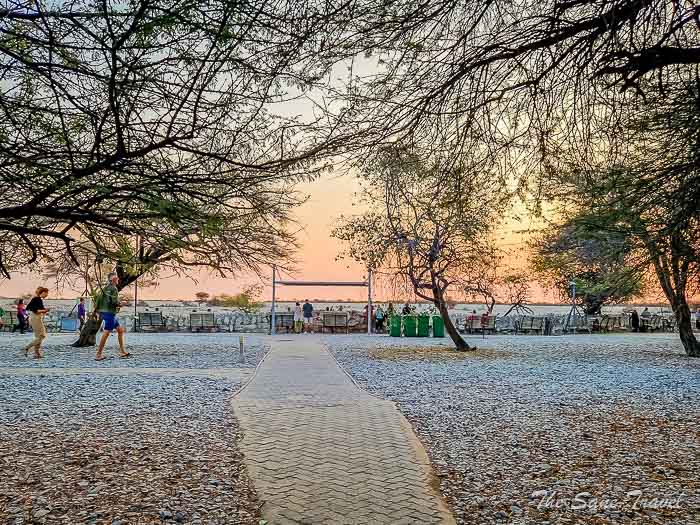
Accommodation options at the camp include waterhole chalets with patios or balconies, bush chalets with a lounge and barbecue area, and double rooms with a fridge, all of which include private bathrooms. The twin room I stayed in was cramped for two people and showed signs of wear and tear.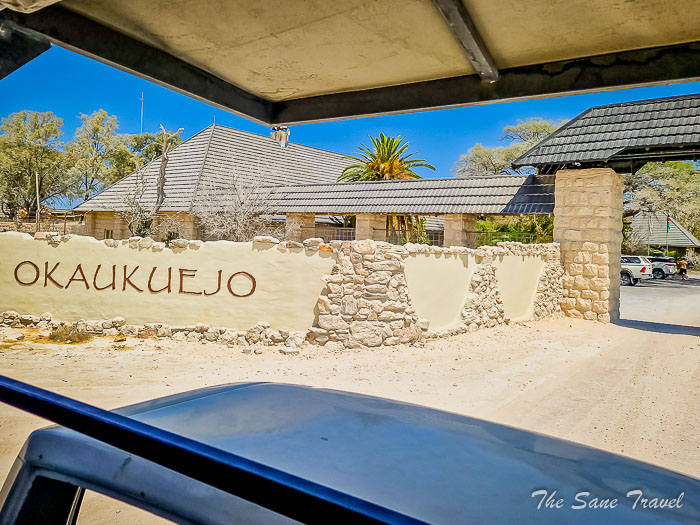
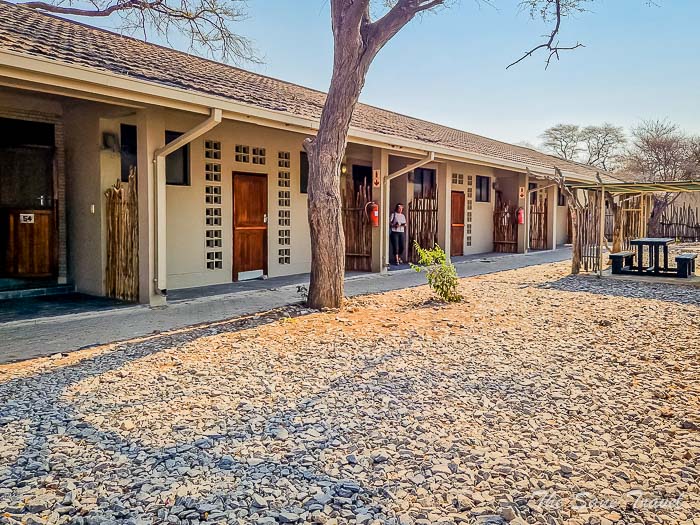
Namotoni Camp
Namotoni Camp is situated on the site of a former German fort, characterised by its tall white walls.  The camp has two restaurants that offer a range of meals, and it is highly recommended to enjoy sundowners on the fort's walls.
The camp has two restaurants that offer a range of meals, and it is highly recommended to enjoy sundowners on the fort's walls. 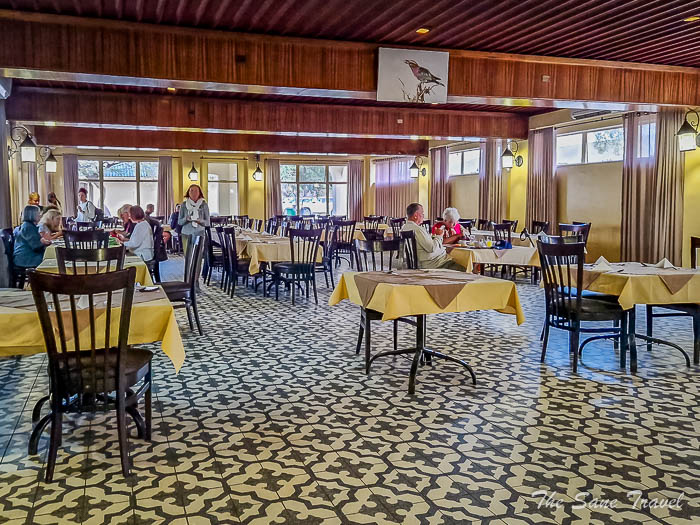 The room at Namutoni, compared to Okaukuejo, was more spacious and aesthetically pleasing.
The room at Namutoni, compared to Okaukuejo, was more spacious and aesthetically pleasing.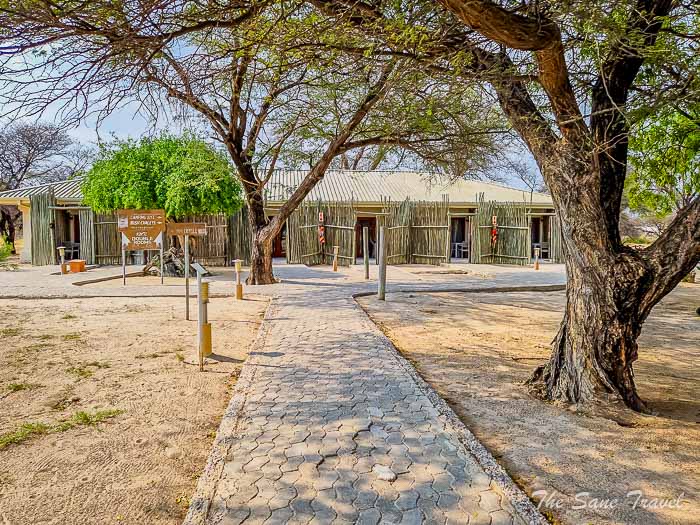

Book accommodation early
If you choose to stay at the park, it is wise to submit an enquiry through the park’s website for the latest information. Advance enquiries are encouraged, as Okaukuejo often reaches full capacity for the high season as much as four months ahead.
Game views and game drives
Game views can be enjoyed at the waterholes in the Etosha camps while sitting in a chair with a drink. The waterhole at Okaukuejo is particularly popular, being the oldest camp waterhole in Etosha Park and attracting various animals, including rhinos and elephants. However, the lighting at night may not be ideal for capturing high-quality pictures.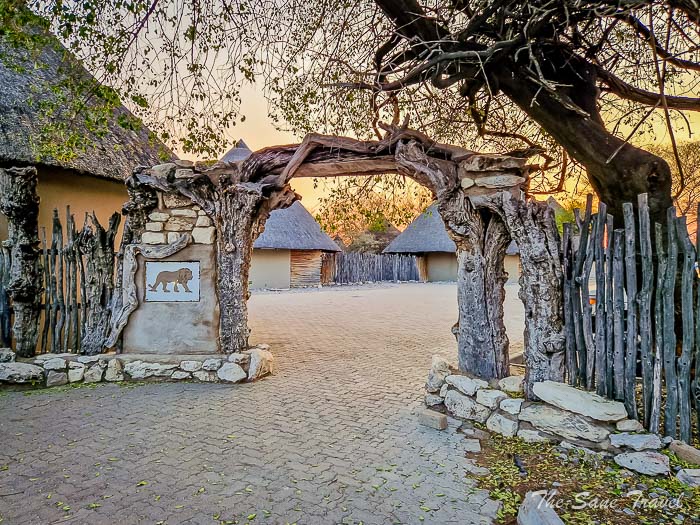
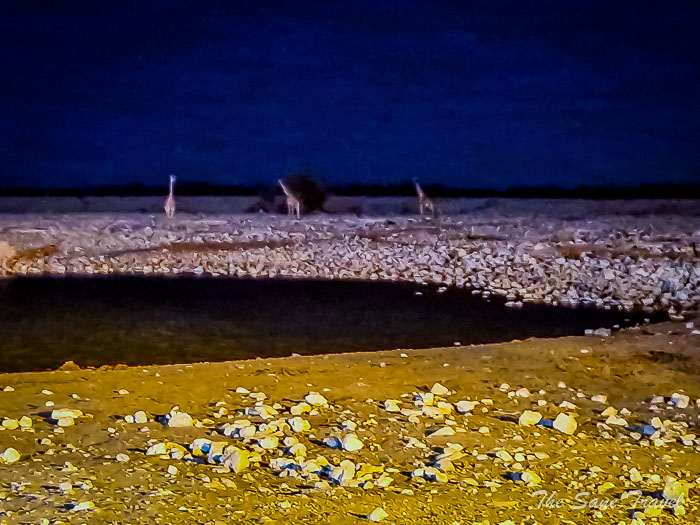
For the best wildlife viewing experience, it is prudent to prepare for your game drive the night before and arrive at the gate before dawn. My packing list for Namibia may prove helpful in getting ready for your game drive even before you leave home. Allocate 3 to 4 hours for wildlife observation before taking a break at one of the camps – Okaukuejo, Halali or Namutoni – each offering amenities such as a swimming pool, refreshments, restrooms and a relaxing environment where you can unwind for a few hours. Interacting with other guests at the camps can also be beneficial for exchanging information about wildlife sightings.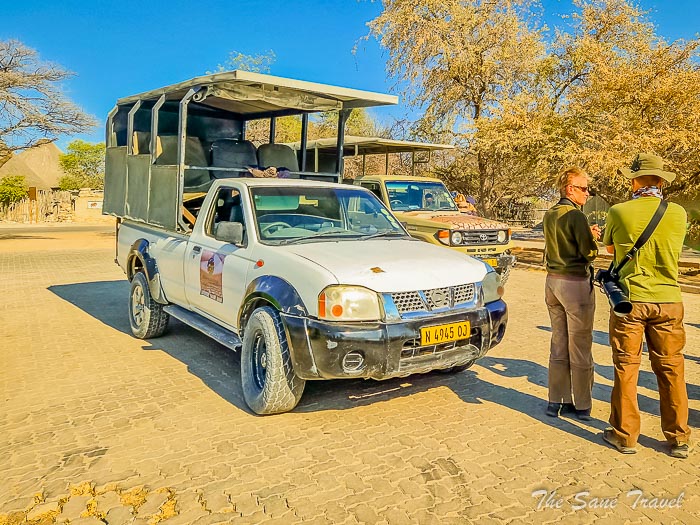
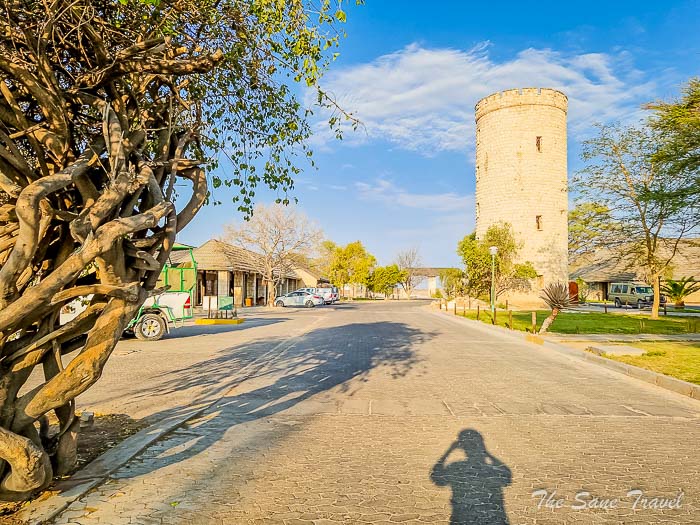
You can also book a game drive in a specialised open game viewer vehicle. Skilled guides operating these vehicles possess extensive knowledge about the surroundings and wildlife, providing insightful commentary throughout the journey.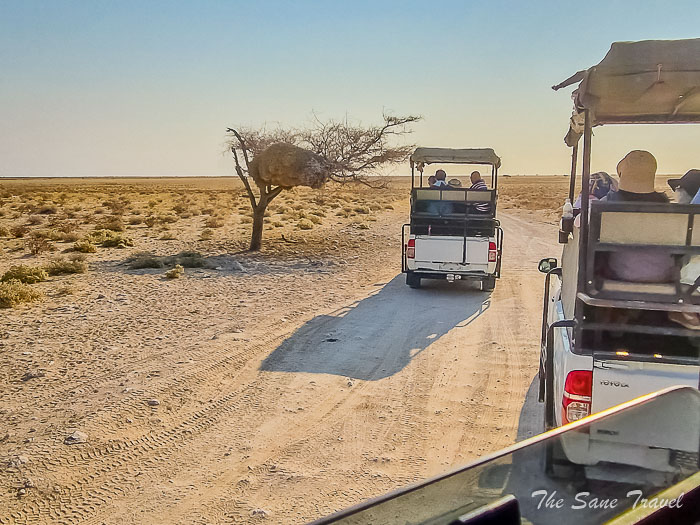
Spending two to three days game driving in Etosha is advisable to cover long distances and increase the chances of spotting wildlife.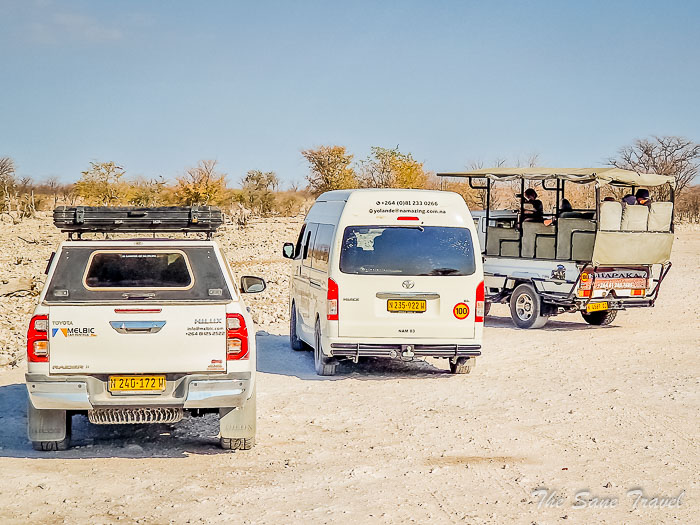
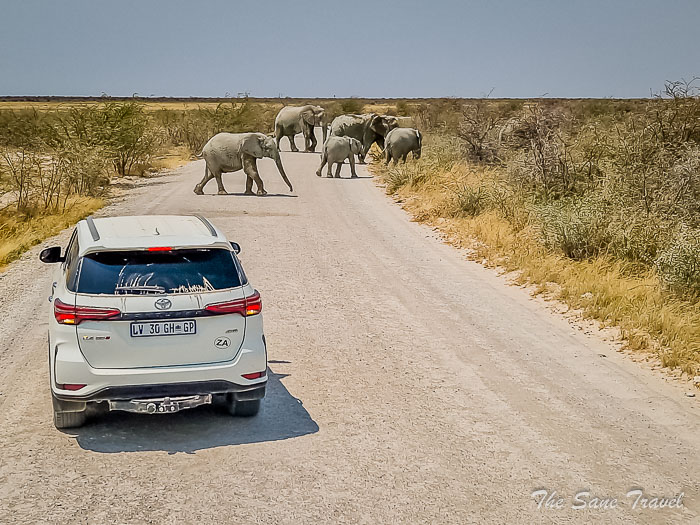
Photography tips
Preparing in advance is crucial to ensuring you capture remarkable photos of the animals you encounter. I recommend bringing both a camera with a zoom lens and a phone with a good camera that you can secure with a lanyard to prevent loss. I used a Panasonic Lumix DC G90 with a 100–300mm lens and a Lexar professional SD card with 64 GB memory and 270 MB/s speed during my trip. The mirrorless design of this camera, along with its lightweight lens, made my bag lighter.  I also had a Samsung Galaxy S22 plus phone, which I used for close-up shots and videos while reserving the camera for shots taken from a greater distance.
I also had a Samsung Galaxy S22 plus phone, which I used for close-up shots and videos while reserving the camera for shots taken from a greater distance. 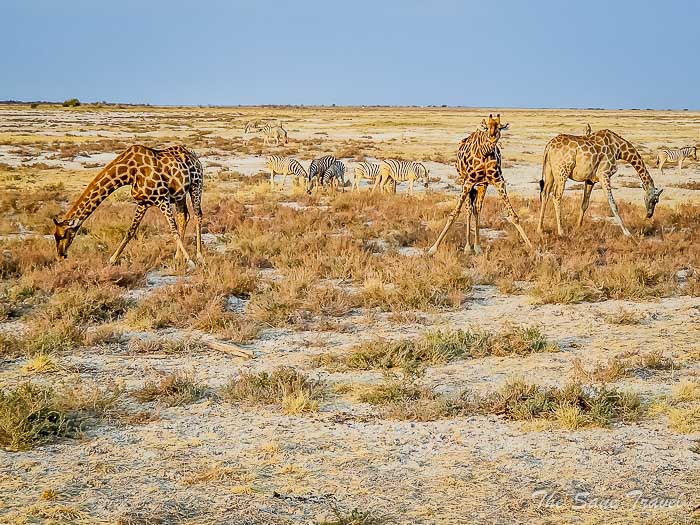 A stable position and a firm grip on the camera are crucial for preventing blurriness when photographing moving animals. Given their constant movement, taking multiple shots is recommended to increase your chances of capturing the ideal pose, which may require several attempts. I suggest using continuous autofocus and auto mode for quick and efficient shooting, as manual settings may take too much time. Check a few initial photos to ensure the settings are correct and the images are sharp, and remember to carry spare camera batteries to avoid missing any photo opportunities.
A stable position and a firm grip on the camera are crucial for preventing blurriness when photographing moving animals. Given their constant movement, taking multiple shots is recommended to increase your chances of capturing the ideal pose, which may require several attempts. I suggest using continuous autofocus and auto mode for quick and efficient shooting, as manual settings may take too much time. Check a few initial photos to ensure the settings are correct and the images are sharp, and remember to carry spare camera batteries to avoid missing any photo opportunities.
Like it? Pin it! 
What did you think? Have you been to Etosha? I would love to hear from you, so please add your comment below.
Author: Anita Sane

About the author
Anita is a part-time traveller, passionate photographer and a retired career woman from Latvia, travelling mostly solo for more than 15 years. She is a skilled travel planner who plans and executes her travels by herself. Anita wants to show you how to travel the world and open your mind to new experiences. Follow her on Facebook, Instagram, Pinterest, Twitter and Bloglovin.

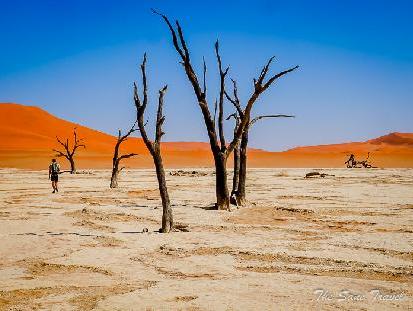
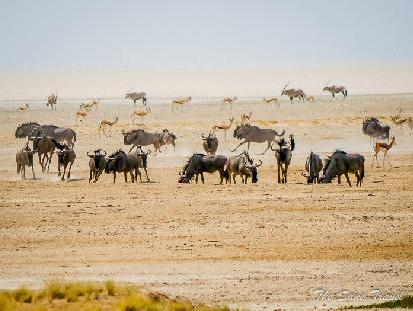
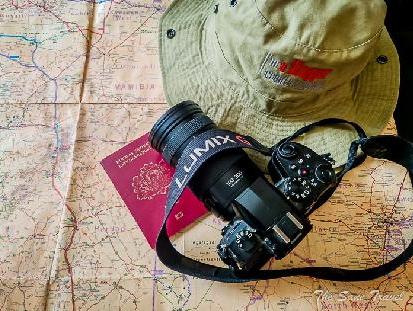
Report
My comments